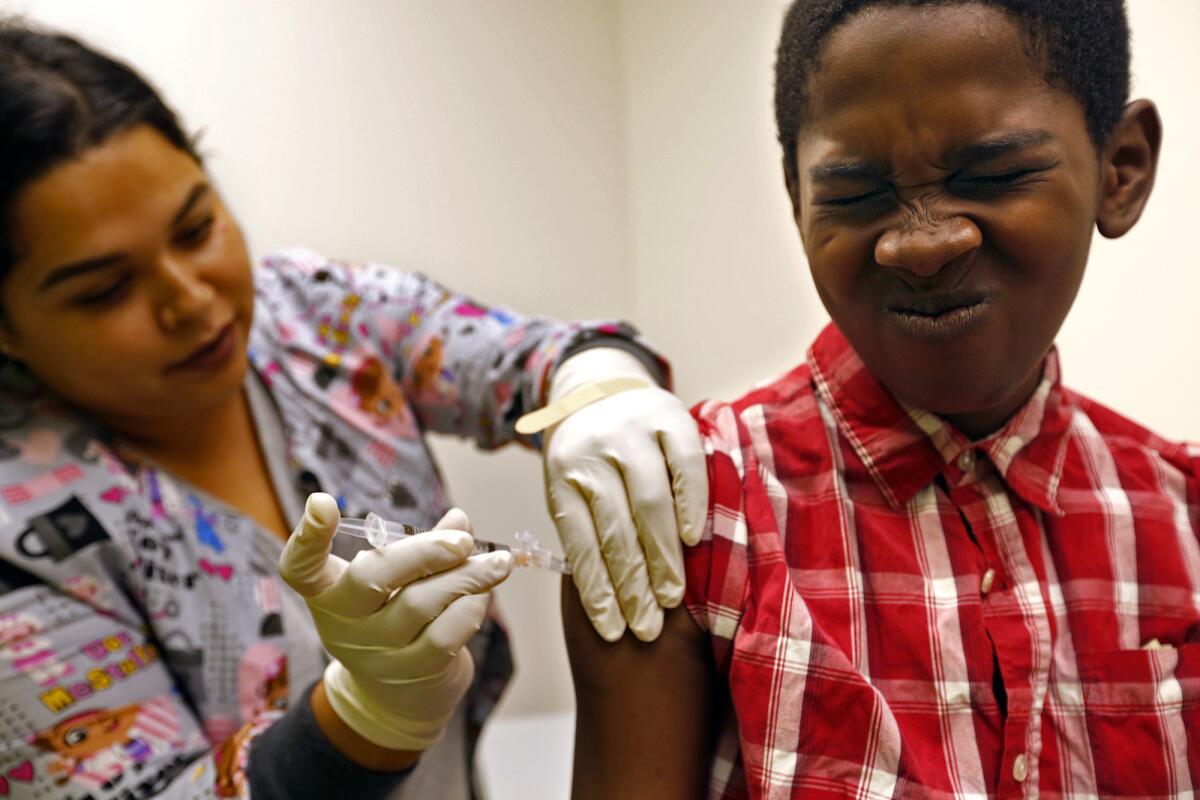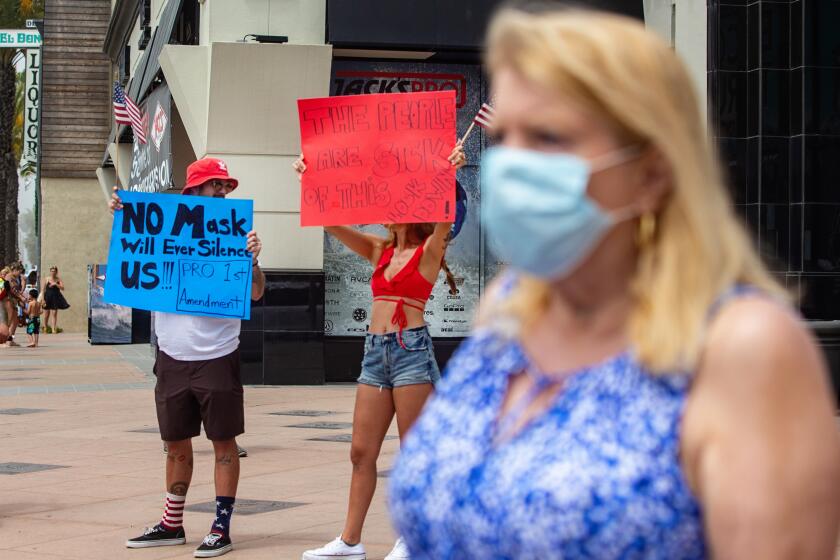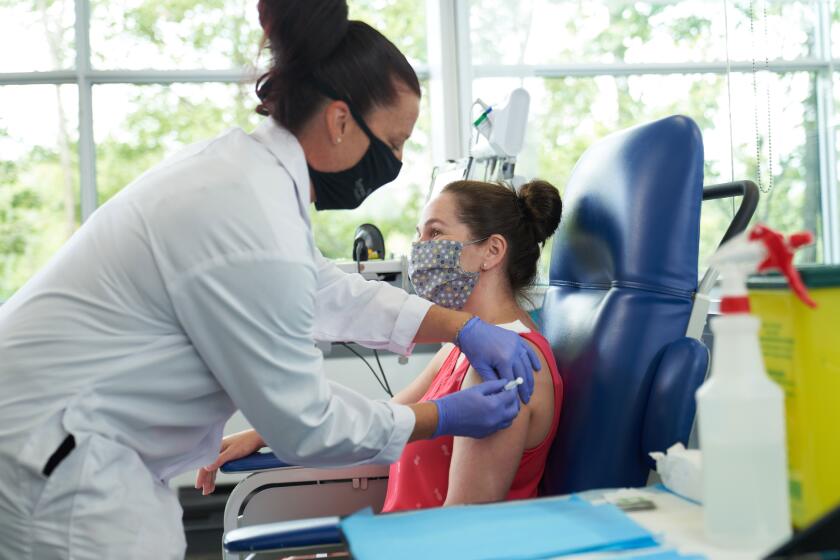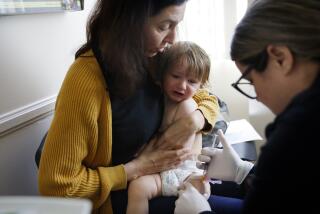Pharmacists can give childhood vaccinations, U.S. officials say

- Share via
Pharmacists in all 50 states are now allowed to give childhood vaccinations under a new directive aimed at preventing future outbreaks of measles and other preventable diseases.
Alex Azar, the head of the Department of Health and Human Services, took the step using emergency powers he has during the U.S. coronavirus epidemic, which was declared a public health emergency. The directive announced Wednesday will temporarily preempt restrictions in 22 states starting this fall.
The move is designed to help prevent vaccination rates from falling during the pandemic, Azar said.
The Centers for Disease Control and Prevention has reported that orders for childhood vaccines from doctors’ offices plummeted in late March and early April as their offices closed or saw fewer patients, raising concerns that vaccination rates would fall.
But a survey of pediatricians in May suggested that most offices were open and able to give recommended shots, and more than half were able to take on new patients if needed. Another CDC report from late July noted that New York City saw a rebound in kids getting their shots.
The agency’s nationwide numbers for 2020 are not expected for another year.
“Especially as we approach the school season, it is critical that children have easy access to the pediatric vaccinations to enable them to get back to school as schools reopen,” Azar said.
The more people see wearing face masks and practicing social distancing as ways to protect the health of others, the more likely they are to comply, research shows.
The American Academy of Pediatrics opposed the federal action as unnecessary and potentially dangerous for children.
Pharmacists aren’t likely to be familiar with a child’s unique medical history, the organization said. In addition, if parents are wary of having their children vaccinated, the doctors with whom they’ve already established relationships are in a better position to reassure them about the benefits of immunizations, the pediatricians group said.
“This move is incredibly misguided,” Dr. Sally Goza, the academy’s president, said in a statement. “Pediatricians’ offices are open and safe. We have all necessary childhood and adolescent vaccines in stock with trained medical professionals who can administer them.”
The Trump administration has been pushing for schools and day care centers to reopen, as part of an effort to allow parents to return to work and help revive the economy.
Currently 28 states allow pharmacists to administer vaccinations to children, Azar said. In 22 states, laws limit such vaccinations, including three states that prohibit pharmacists from giving immunizations to any kids.
The authorization allows state-licensed pharmacies to administer childhood vaccines without a doctor’s prescription. Pharmacists must first complete a training program, and many already have, Azar said.
The measure does not allow pharmacists to give shots to children younger than 3. Some of the most important childhood vaccinations are given to babies and toddlers, but pharmacists don’t have the training or medical support to administer doses to young children, said Dr. Brett Giroir, the HHS assistant secretary for health.
The first wave of coronavirus vaccines might be like a flu shot, experts say, curbing symptoms in some patients but not protecting them from COVID-19.
Most childhood vaccinations are given at a doctor’s office and it’s relatively unusual for kids to get vaccinations at pharmacies. In 2018, only about 7% of childhood flu shots were administered at pharmacies, according to CDC data. And it’s even rarer for other childhood shots to be given at drug stores.
The American Pharmacists Assn. has been talking with federal officials about expanding services that its members can provide during the pandemic, said Mitchel Rothholz, the organization’s chief of governance and state affiliates.
“I wouldn’t say we initiated” the idea of gaining federal authorization to vaccinate children, he said. “It was part of ongoing conversations ... with decision makers, both at the federal and state level.”








